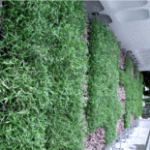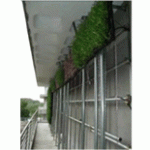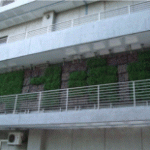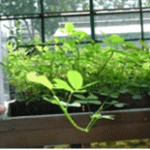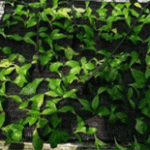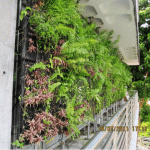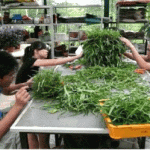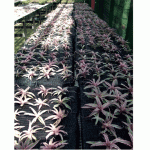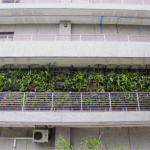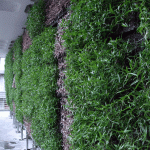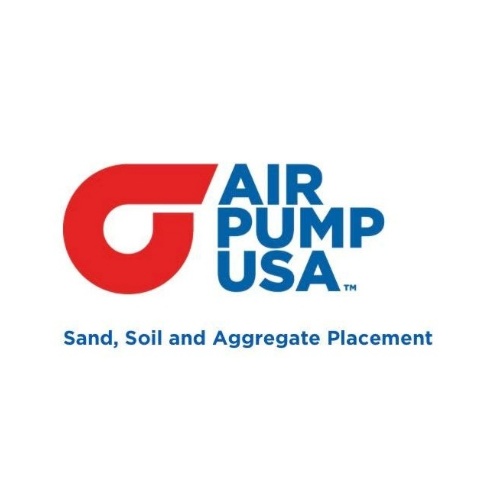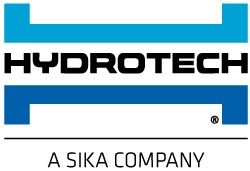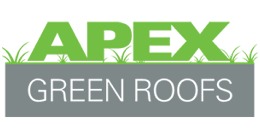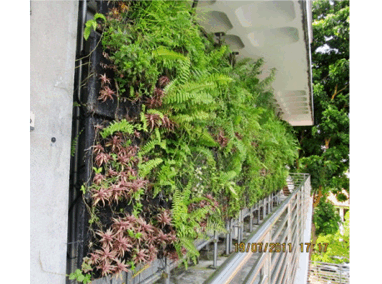
Additional Resources
Ngee Ann Polytechnic is located at 535 Clementi Rd, Singapore 599489, 6466 6555; www.np.edu.sg. Read Linda Velazquez’s October 25, 2011 Sky Gardens Blog post GPW: Ngee Ann Polytechnic’s Vertical Extensive Green Wall Testing Facility. For additional information on the Ngee Ann Polytechnic’s Vertical Extensive Green Wall Testing Facility, please contact Kheong Keat Gregory Chow at: ckk@np.edu.sg.
Early efforts to green up walls and flyovers vertically began about 40 years ago with the use of creepers and ornamental plants to increase the aesthetic values. Current vertical greening planter systems implemented in Singapore were mainly from overseas which tend to be heavy, difficult to install and suited for deep rooted plants. Apart from the planter system, not much was known about the suitability of plant species growing under vertical growing conditions especially in a sustainable manner over a long period in the tropics.
The Landscape Design and Horticulture programme from the School of Life Sciences and Chemical Technology at Ngee Ann Polytechnic then embarked to develop ‘simpler?’ green walls for high rise buildings where 90% of residences are dwellers. The second task was to evaluate shallow rooted plant species for its growth habit, disease susceptibility, nutrient deficiencies and its maintenance requirement.
The 2-year research on sustainable plant species for the green wall involved 40 students from Ngee Ann?s Polytechnic’s Landscape Design and Horticulture programme. The outcome was a 12m x 2.5m vertical extensive green (VEG) system which was implemented in 2009. The VEG comprised of 120 polypropylene panels (50 x 50 x 3cm) that were pre-grown with shallow rooted vegetative cuttings and plantlets. Such green wall testing facility allowed us to research 11 species of grass, bromeliad, creeper and fern on shallow panels filled with cocopeat (2% osmocote) for their long term growth performance. Growing media cocopeat has excellent water retention and drainage properties. Black plastic shade nets wrapped and secured around the panels with cable ties to prevent the growing media from falling out.
Plants were irrigated daily for 10 minutes. Irrigation tubings were positioned between the wall and vegetative panels. A combination of chains and hooks secured the panels along the VEG wall. In the event of maintenance or plant replacement, upper panels could be lowered down with the assistance of a pulley above. Since then, plant species have been identified and categorized (according to length of growing period) for its adaptability in growing vertically under tropical conditions. Such information will allow the greenroof industry a choice of designing future green walls for either its trim-shape or natural appearances. The VEG system was also able to support growth of shallow rooted plants without the requirement for major planting maintenance.
 Greenroofs.comConnecting the Planet + Living Architecture
Greenroofs.comConnecting the Planet + Living Architecture
